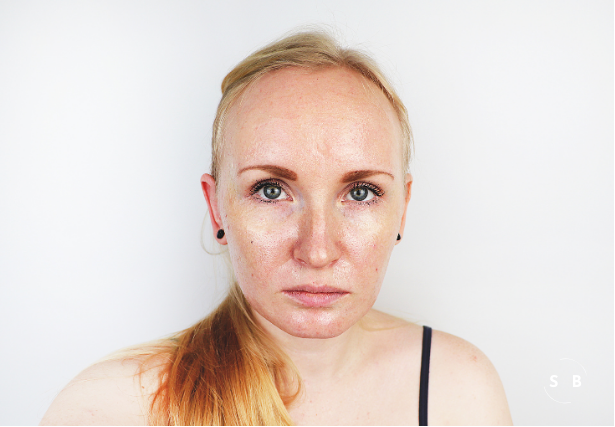You’re in your 30s and still struggling with acne? You’re not alone.
Today, let’s talk about hormonal acne—also known as adult female acne—a topic we address frequently in our practice.
What is Hormonal Acne?
Hormonal acne, or adult female acne, refers to breakouts occurring in women over the age of 25. This can affect women who have dealt with acne since their teenage years or those who experience their first outbreaks in their 20s, 30s, 40s, or even during perimenopause. It can be incredibly frustrating, impacting self-esteem, self-image, and quality of life. Studies estimate that up to 30% of adults, both men and women, continue to experience acne into adulthood.
This issue resonates personally with us because we also suffer from hormonal acne.
The Cyclic Nature of Hormonal Acne
Hormonal acne is often closely linked to the menstrual cycle, with many women experiencing noticeable flare-ups right before their period. For some, acne may persist at a baseline level and intensify during this time, while others experience clear skin most of the month with periodic breakouts. The distribution of hormonal acne is typically along the lower face, particularly the jawline, in a “U” shape, resembling the beard area in men.
This deeper, cystic acne can be painful, inflamed, and resistant to coming to a head. Additionally, it often leaves behind stubborn dark spots or redness, making the aftermath just as frustrating as the breakouts themselves.
Who is Most Prone to Hormonal Acne?
Hormonal acne can affect anyone, but certain factors increase its likelihood:
- Genetic Predisposition: A strong family or personal history of acne makes individuals more susceptible.
- Hormonal Changes: Events like starting or changing contraception, pregnancy, and postpartum periods can trigger acne due to hormonal fluctuations.
- Lifestyle Factors: High-sugar or high-glycemic diets, stress, and inflammatory foods can contribute to acne flares.
Why Does Hormonal Acne Occur?
Hormonal acne is primarily driven by the stimulation of oil glands by androgens—hormones that surge during the monthly cycle. Elevated androgens increase oil production, leading to deeper, cystic pimples that are difficult to treat.
Even for women without obvious cyclic flares, addressing hormonal imbalances is crucial for effective treatment.
Effective Treatments for Hormonal Acne
Successfully managing hormonal acne often requires a combination of topical and oral treatments tailored to the individual’s needs.
Topical Treatments
Topical therapies, effective for both mild and deeper acne, include:
- Benzoyl Peroxide: Reduces bacteria and inflammation.
- Topical Retinoids: Help prevent clogged pores, reduce acne, and address hyperpigmentation.
- Azelaic Acid: Particularly beneficial for treating acne and hyperpigmentation, especially in prescription-strength formulations.
For women with mild to moderate acne who prefer not to use oral medications, these options can be effective for managing occasional flares.
Oral Medications
For more severe cases, oral treatments often provide the most impactful results.
- Oral Contraceptives (Birth Control Pills):
These are FDA-approved for treating hormonal acne. They work by tempering hormonal fluctuations and increasing proteins in the blood that bind to androgens, thereby reducing their effect on oil glands.
Limitations:
- Not ideal for women over 35 who smoke or have a history of blood clots, stroke, or high blood pressure.
- Some women dislike the side effects, such as migraines or mood changes.
- Spironolactone:
This is our go-to medication for hormonal acne. It blocks androgen receptors in oil glands, preventing hormonal stimulation that leads to cystic acne.
Key Benefits:
- Highly effective and safe for long-term use.
- Recognized as safe during breastfeeding (though not pregnancy) by dermatologists and the American Academy of Pediatrics.
- Common Side Effects:
- Breast tenderness, irregular periods, or lightheadedness.
- Frequent urination, as it is a mild diuretic.
- Spironolactone is generally well-tolerated, and side effects often subside over time. However, it’s not recommended for individuals with a history of heart or kidney disease.
Combining Treatments for Optimal Results
For most patients, combining topical treatments with oral medications offers the best results. For example, pairing spironolactone with benzoyl peroxide or a retinoid can tackle acne from multiple angles.
Important Considerations
- Time to Effectiveness: Hormonal treatments, including spironolactone and birth control pills, may take up to three monthly cycles to show significant improvement.
- Pregnancy and Breastfeeding: Spironolactone is not safe during pregnancy but can be used while breastfeeding, provided lactating mothers establish a solid milk supply first.
- Personalization: Acne treatments should always be tailored to individual needs, considering factors like medical history, lifestyle, and preferences.
Closing Thoughts
Hormonal acne can be challenging to manage, but effective treatments are available. If you’ve struggled with this condition, you’re not alone, and solutions exist to help you regain control and confidence.
We hope you found this blog post informative. Share your experiences or questions about these treatments in the comments below. Let’s continue this conversation and support one another!
See you next time!









Leave a Reply